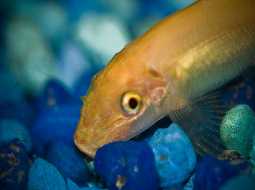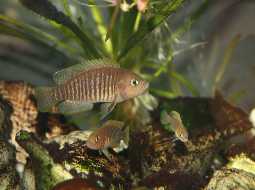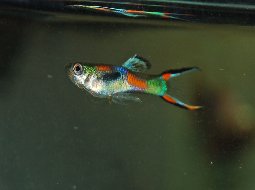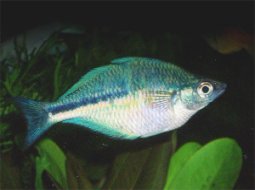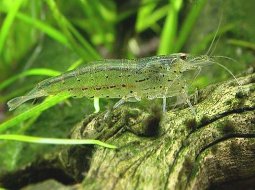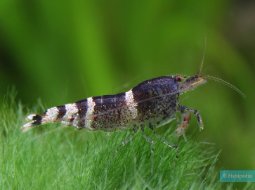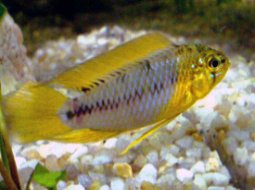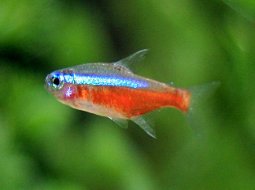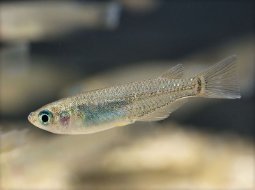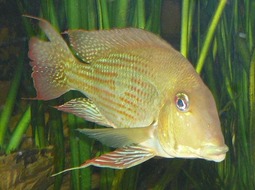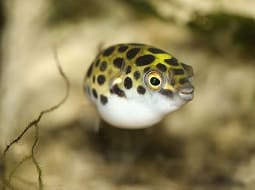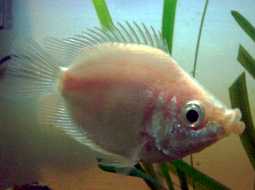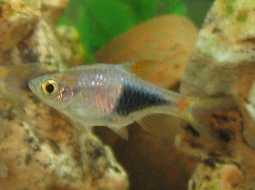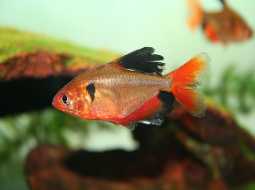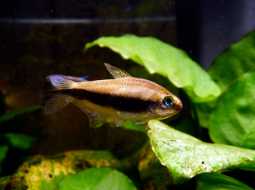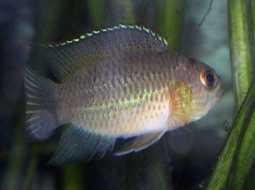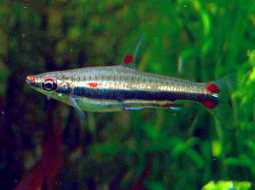
Loading Aqualapp ...
Care and Compatibility of Kribensis Cichlid - Pelvicachromis pulcher
Introduction
The Kribensis cichlid has a compact body and varied coloration. Males are usually larger and exhibit more intense colors than females. Depending on the region of origin, they can display different color variations, ranging from red and orange tones to yellow and blue. They are known for their long and elegant fins.
Behavior
The Kribensis cichlid, also known as Pelvicachromis pulcher, is a cichlid fish native to West Africa. They are known for their vibrant coloration and territorial behavior. They are relatively peaceful fish, but during the breeding season, they can become more aggressive and defend their territory. It is recommended to keep them in an aquarium with hiding places and areas to establish their territory.
Sexual Dimorphism
Sexual dimorphism in Pelvicachromis pulcher is pronounced. Males are generally larger and have brighter colors, while females tend to be smaller and have duller colors.
Reproduction
The Kribensis cichlid reproduces in a monogamous manner and can form lifelong pairs. During the breeding season, the male builds a nest in a cave or in an area with hiding places and attracts the female to spawn. After spawning, the female incubates the eggs in her mouth for approximately 2 weeks. During this time, the male guards the territory and the female.
Aquarium Conditions
Pelvicachromis pulcher, commonly known as kribensis cichlid, requires a well-planted aquarium with plenty of hiding spots and refuge areas. It prefers slightly acidic to neutral water and a warm temperature. Aquarium décor should include driftwood, rocks, and hardy plants. Maintaining water quality is crucial and providing a varied diet.
Feeding
They are omnivorous fish and accept a variety of foods in their diet. They primarily feed on small aquatic invertebrates, larvae, crustaceans, and plant matter. They can be provided with commercial foods in the form of pellets, flakes, or live foods such as brine shrimp and daphnia. It is important to provide them with a balanced diet to maintain their health and vitality.
Complexity
Caring for Pelvicachromis pulcher can be moderately challenging. They are territorial fish and can be aggressive towards other cichlid fish, especially during breeding. A group of at least one pair is recommended in a well-structured aquarium. They require a varied diet and proper feeding to maintain their health and coloration.
In case you need more help, or if you want to know into any topic related to the Pelvicachromis pulcher (Kribensis Cichlid) and even any other species you can use the forums to ask what you need.
To do an analysis more detailed about coexistence and behavior of Pelvicachromis pulcher (Kribensis Cichlid) use the Aquarium simulation tool, if you do this you can test different ways to combine the Kribensis Cichlid with other fishes giving the dimensions and space on you aquarium, on this way you can known the optimal configuration for keep the fishes that you want.
You can also find out the 109 species compatible with the Pelvicachromis pulcher (Kribensis Cichlid) can live together.
Note: The parameters of the water such as PH and temperature are also used to calculate the compatibility of the species.
Compatible species (109)
Compatible (27 Species)
Compatible without any restriction
Similar Sizes (2 Species)
They can coexist if they are the same size or very similar sizes, it does not work in all cases, there may be exceptions.
With Reservation (16 Species)
Compatible in some cases, it depends on the nature and personality of the fish.
Tener cuidado por que es posible que puedan defender el territorio en parejas.
Las especies territoriales por lo general pueden convivir con especies protegidas con coraza, ya que no pueden hacerles daño por su dura piel, lo que si hay que tener en cuenta es tener un acuario con dimensiones favorables para que cada pez pueda delimitar un territorio, ya que la mayoría de peces acorazados son también peces de fondo y les gusta estar buscando lugares donde ocultarse.
Showdown over territory (35 Species)
Fish can live together as long as the space is spacious enough to delimit a territory, otherwise there may be aggressions for competing for the territory.
Como a estos peces les gusta estar refugiados en diferentes ubicaciones del acuario ya sean en plantas, troncos, rocas etc, si otro pez intenta entrar donde está escondido podrían haber confrontaciones por ese refugio.
Considerable size difference (20 Species)
They can coexist while they are similar in size or the size difference is not very abysmal, since as the fish grows it increases the chances of eating its partner that did not grow much.
Compatible if space is enough (9 Species)
They can coexist together if the aquarium they share is large and spacious enough for both species to feel good, as some fish may attack others to feel that they have little space and try to eliminate the competition.
Kribensis Cichlid
Pelvicachromis pulcher

- Ph: 5 - 7.5
- Temperature (c°): 24 - 28
- Measures: 6 cm - 10cm
- Aquarium Capacity:
50 Liters - 13 Gallons - Alimentación: Omnivores
- Colores: Blue, Green, Red, Yellow
- Comportamiento: Active, Likes to take refuge, Peaceful
- Habitad: African
- Preferencias del Acuario: Natural plants, Rocks, Sand
- Tamaño: Medium
- Taxonomía: Cichlids, Fish
- Tipo de Agua: Sweet water, Tropical waters
- Velocidad de nado o movimiento: Normal
- Zona de Nado: Aquarium background



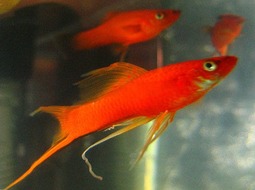
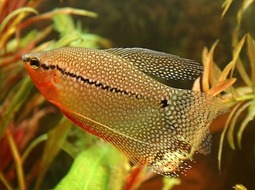



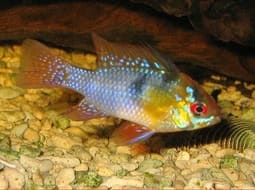
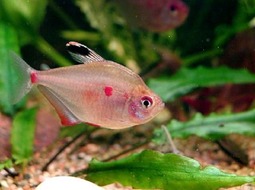




.jpg)


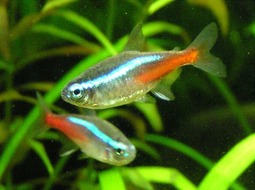
.jpg)
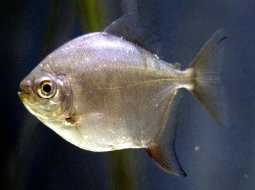
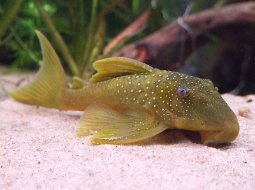



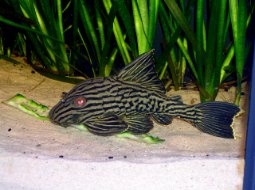


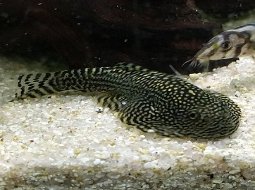




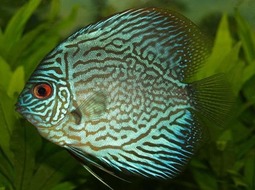
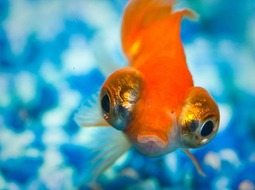
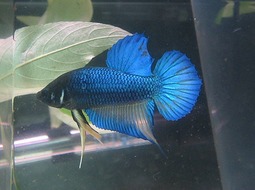
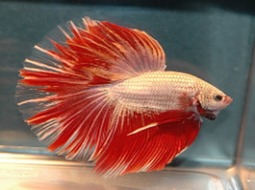
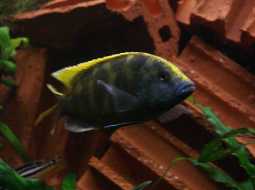
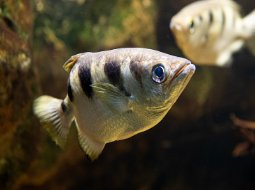
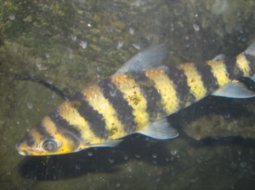
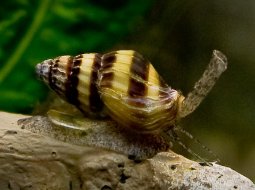








.jpg)

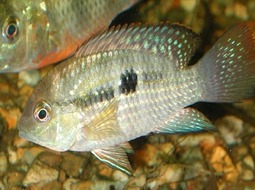
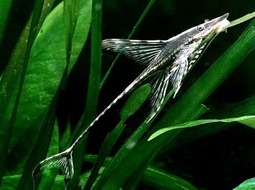


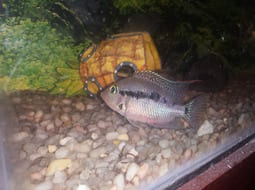

.jpg)

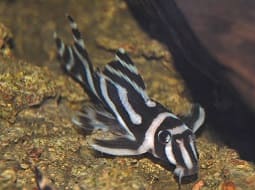





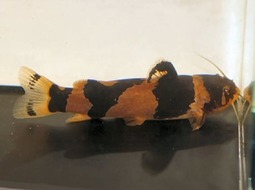

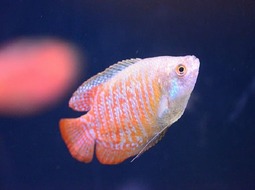

.jpg)

